Fablab and maker space aims to utilize from all natural sources as much as possible in order to reduce its environmental impact. Water management is one of these strategies based on water collection and cycle in the building. The passive systems of the building can be integrated with water management systems. Before understanding which kind of strategies we need to follow, estimation for yearly water consumption must be done. Building needs irrigation for agrolabs that has higher demands for water. Before he calculation, our prediction was that agrolab will consume the most but the results were different.
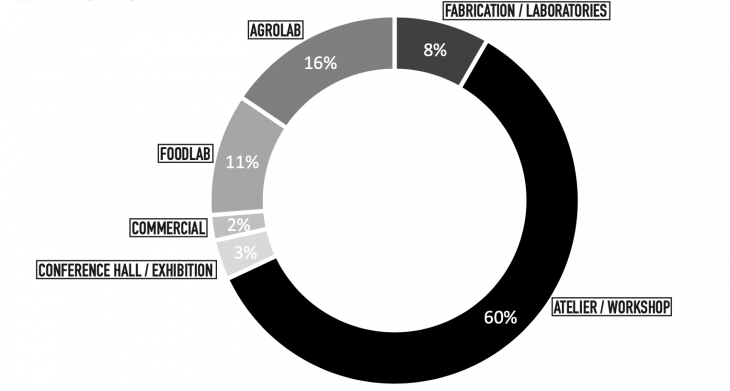
The graph is showing water consumption percentages. Atelier and workshop programs are the biggest consumption sources.
Agrolabs are mostly located at the terraces and on the facades facing to the south in order to both optimize the sun light for plants and protect the interior from the direct light. 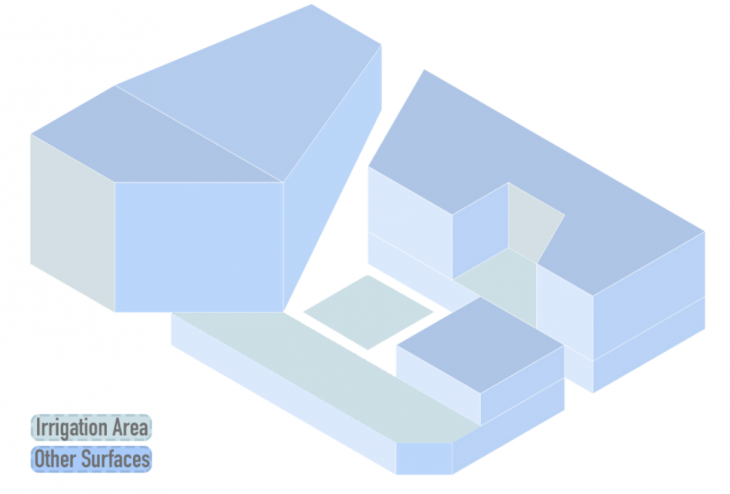
Water collection is really great way to reduce consumption of water supplied from central sources and be independent. Rainwater harvesting can provide water for irrigation, cleaning, sanitary and even for drinking when it is treated enough. Mostly in public buildings use of rainwater is controlled by some regulations for health standards. Annually rainfall of Barcelona examined and average of last ten years are considered as example.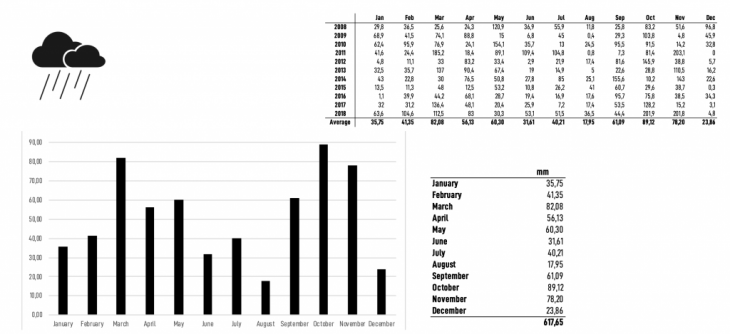 After rainfall assumptions, catchment area is estimated in order to calculate how much liters of storm water collected in a year. Surfaces that are capturing the most amount of water are roof, terraces and courtyards.
After rainfall assumptions, catchment area is estimated in order to calculate how much liters of storm water collected in a year. Surfaces that are capturing the most amount of water are roof, terraces and courtyards.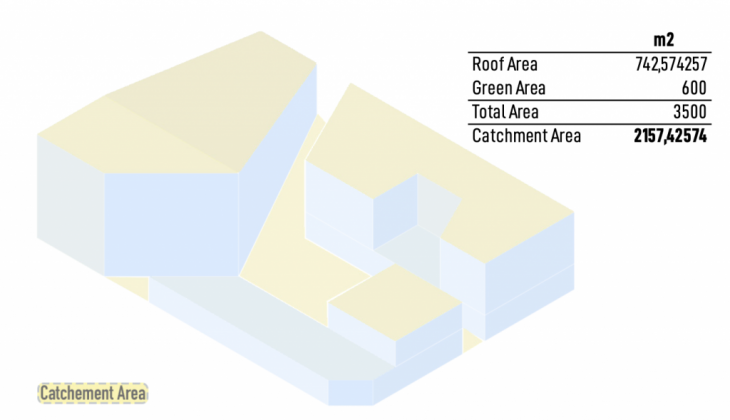
The form of the roof is allowing to collect rainwater with storm pipes carrying it to the water tank. Also permeable pavements are absorbing and filtering the rain water on the courtyards and patios. Storm water management is also needed in order to prevent flooding by creating sponge surfaces. In order to reduce surface runoff and allow filtration of stormwater runoff, permeable pavement can be applied. Control of stormwater also help to filter the water and improve the quality of water which is stored in a tank.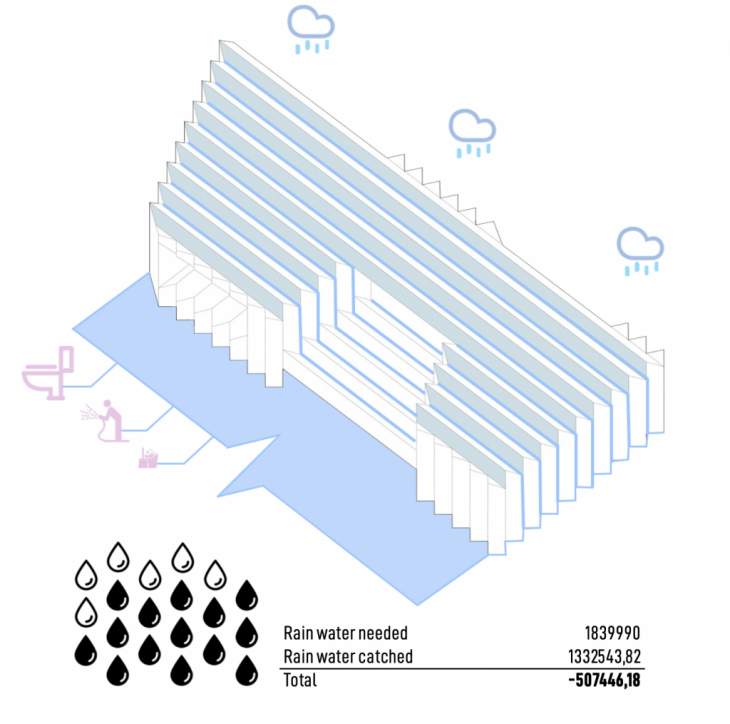
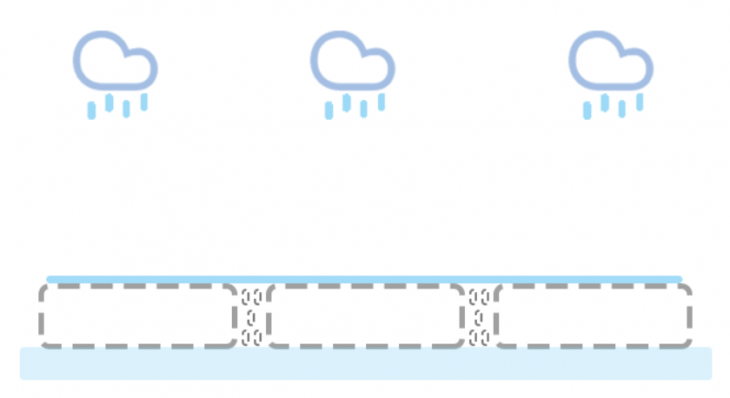
Irrigation demand changes every season and the location of the building. The numbers are showing that biggest demand for water in summer while it is the season with the lest rain fall. However, the water can be stored in a tank. 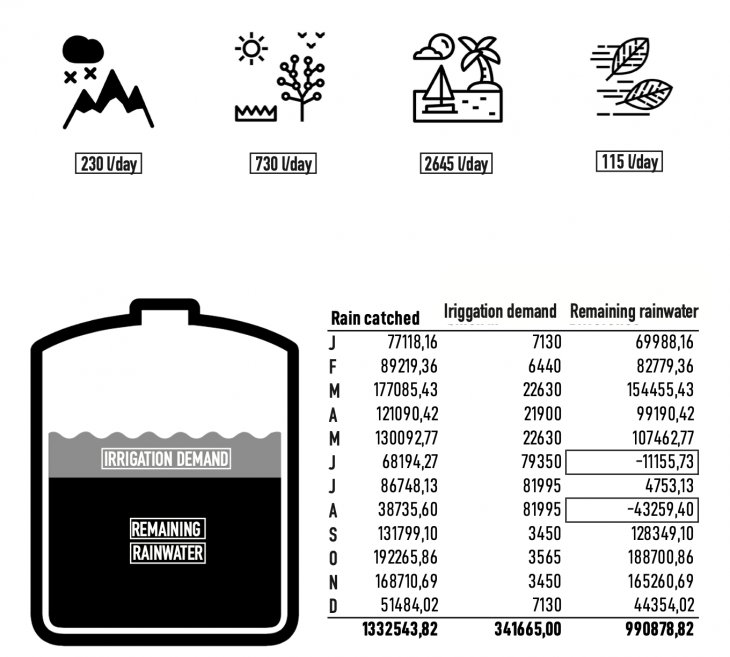
The cycle for grey water is not convenient for this type of building program since there’s not that much of waste water from sinks and showers that is going to be used in flushing. However, if there is a residential building near to the Fablab, the waste water can be sourced and recycled from that building. 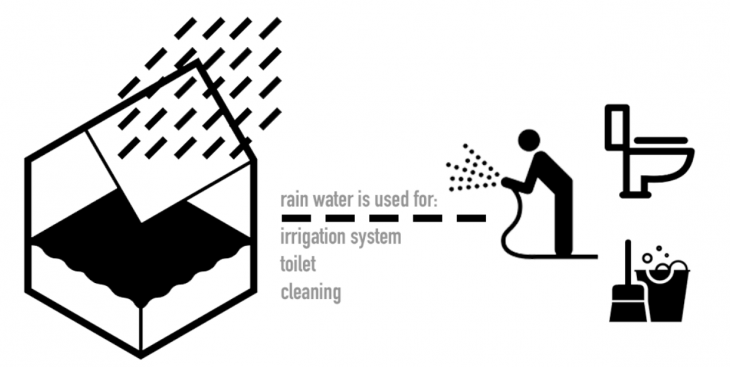
Toilets are causing the biggest consumption in the Fablab and there are solutions provided by some accessories. Dual flush toilet converters are offering choices for users, they can change the amount of flush according to the their needs. 